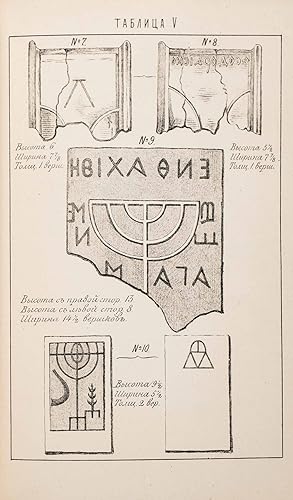ą ąĄą┤ąĮąŠąĄ ą╝ąŠč ąĄ (26 Ergebnisse)
Produktart
- Alle Produktarten
- B³cher (26)
- Magazine & Zeitschriften
- Comics
- Noten
- Kunst, Grafik & Poster
- Fotografien
- Karten
-
Manuskripte &
Papierantiquitõten
Zustand
Einband
Weitere Eigenschaften
Gratisversand
Land des Verkõufers
Verkõuferbewertung
-
Vazvishenie / ą č ą ą ą č ąĄąĮą ąĄ
Verlag: Zhanet 45, 2011
ISBN 10: 9544917209ISBN 13: 9789544917203
Anbieter: AwesomeBooks, Wallingford, Vereinigtes K÷nigreich
Buch
Paperback. Zustand: Very Good. Vazvishenie / ą č ą ą ą č ąĄąĮą ąĄ This book is in very good condition and will be shipped within 24 hours of ordering. The cover may have some limited signs of wear but the pages are clean, intact and the spine remains undamaged. This book has clearly been well maintained and looked after thus far. Money back guarantee if you are not satisfied. See all our books here, order more than 1 book and get discounted shipping. .
-
Nemogucķ - L'impossible. (ą ąĄą╝ąŠą č č ąĄ)
Verlag: Nadrealisti─ ka izdanja / ╔dition Surrķalistes, Belgrade, 1930
Erstausgabe
irst edition. irst edition. In original printed wrappers. Text in Serbo-Croatian (Cyrillic) and French. With several text illustrations and photographic reproductions. pp. [6] 3-136 p., and ff. [1 (of 2) advertisement]. The first collective publication of the Belgrade group of Serbian Surrealists. Nemogucķ is the first collective publication of the Belgrade group of Serbian Surrealists, published in May 1930. It starts with the Manifesto of the movement, signed by the thirteen members of the group (Aleksandar Vu─ o [Vuco], Oskar Davi─ o [Davico], Milan Dedinac, Mladen Dimitrijevi─ [Dimitrijevic], Vane ┼Įivadinovic [Zivadinovic] Bor, Radojica ┼Įivanovic [Zivanovic] Noe, Djordje Jovanovi─ [Jovanovic], Djordje Kosti─ [Kostic], Du┼Īan Mati─ [Dusan Matic], Branko Milovanovi─ [Milovanovic], Ko─ a Popovi─ [Koca Popovic], Petar Popovi─ [Popovic], and Marko Risti─ [Ristic]) and followed by various texts of prose or poem, reflecting on the surrealist ideas. Contains numerous illustrations, among them Nicola Vuco's photograph on the title page, and Vane Bor's photograms. Unopened. Spine somewhat worn at head and tail. Some traces of crease to wrappers. One of the extra advertisements leaf not presented. Otherwise in fine condition. In original printed wrappers. Text in Serbo-Croatian (Cyrillic) and French. With several text illustrations and photographic reproductions.
-
Vrijeme ponosa ą č ąĄą╝ąĄ ą┐ąŠąĮąŠč ą░
Verlag: Blurb, 2019
ISBN 10: 046415491XISBN 13: 9780464154914
Anbieter: WeBuyBooks, Rossendale, LANCS, Vereinigtes K÷nigreich
Buch
Zustand: VeryGood. Most items will be dispatched the same or the next working day.
-
┼ wiat Si─ Smieje (ą ąĄč č ą╗č ąĄ č ąĄą▒č č ą░ or Jolly Fellows)
Verlag: Polonia-Film (Polonjafilm), Krakow, 1934
Anbieter: ERIC CHAIM KLINE, BOOKSELLER (ABAA ILAB), Santa Monica, CA, USA
Erstausgabe
Softcover. Zustand: vg- to vg+. First edition. 48mo. Measures approx. 2.5x3.5". Unpagianted [16 leaves]. B/w photo-illustrated stapled wrappers. The publication is a very small softcover Polish-language promotional booklet for the Soviet musical film ą ąĄč č ą╗č ąĄ č ąĄą▒č č ą░ (known in English as "Jolly Fellows"). Profusely illustrated throughout with photomontage in b/w photogravure, featuring stills from the film and close-ups of the stars. The cover features leading actress Lyubov Orlova. The film, which was directed by Grigori Aleksandrov for Mosfilm, was an extremely popular comedic musical in its time, and garnered international critical acclaim. Included in the booklet are some main credits from the film and a short essay/review of the film by Polish artist and graphic designer Stanis┼ aw Rzecki. The booklet was distributed at the, "Grazyna" movie theater in Lviv (now Ukraine), and bears its name, stamped on the front cover. At the time of the inter-war period, Lviv was part of the Second Polish Republic. Text in Polish. Minor rubbing to the edges and corners of the wrappers. Staple rusted. Wrappers in very good, interior in very good+ condition. Protected by modern mylar. Extremely scarce.
-
EVREISKIE POGROMY 1918-1921 . ą ą č ąĄą č ą║ą ąĄ ą┐ąŠą č ąŠą╝č , 1918-1921
Verlag: Moscow; Shkola I Kniga, 1926
Anbieter: Dan Wyman Books, LLC, Brooklyn, NY, USA
Erstausgabe
First edition and 1 of 5000 copies published. Period boards. 4to, 136 pages. Folio. In Russian. "Jewish Massacre. 1918-1921." With numerous photographic illustrations. A detailed album highlighting the horrific results of a wave of ferocious pogroms afflicted upon Jewish communities in the Ukraine including Skvira (Skver) , Poltava, Uman, Kiev and Yelizavetgrad during the Civil War years of 1918-21. The text has a distinctly Nationalist element, portraying Jews saved from the attacking native population by the Red Army. The publication was issued by Z. S. Ostrovsky on behalf of the Jewish Committee for Aid to Victims of Pogroms. With well over 200 photos, this work is based on an exhibit of images and documents put together by the Jewish Committee of Victims of Pogroms which was shown in 1923 in Moscow. It's a brutal depiction of the third set of pogroms which swept in Russia from 1918 and 1921 in the wake of the Russian Revolution, much worse than the earlier massacres in the 1880s and then again in 1903-1906. This post-war set of pogroms were led by bands of soldiers from the disintegrating tsarist army. Ostrovsky's work doesn't state the fact that the first pogroms to be accompanied by slaughter of Jews were perpetrated by units of the Red Army which retreated from the Ukraine in the spring of 1918 before the German army. These pogroms took place under the slogan "Strike at the bourgeoisie and the Jews." The Jewish communities of Novgorod-Severski and Glukhov in northern Ukraine were the most severely affected. These pogroms reached their climax in the massacre at Proskurov on Feb. 15, 1919, when 1,700 Jews were done to death within a few hours. On the following day, a further 600 victims fell in the neighboring village of Felshtin (Gvardeiskoye). Those responsible for these pogroms went unpunished, and henceforward the Ukrainian soldiers considered themselves free to spill Jewish blood. The Jews regarded Simon Petlyura, the prime minister of the Ukraine and commander of its forces, as responsible for these pogroms. The general chaos which reigned in the Ukraine in 1919 resulted in the formation of large and small bands of peasants who fought against the Red Army. The Jews in the villages, shtetls, and towns there were constantly terrorized by the peasants, who extorted money and supplies from them or robbed and murdered them. One of the most notorious pogroms carried out by the peasant bands was that in Trostyanets in May 1919, when over 400 people lost their lives. In the fall of 1919, there was a wave of pogroms committed by the counterrevolutionary White Army, under the command of General A.I. Denikin. (credit: Klinebooks). See Z. Gitelman, A Century of Ambivalence: The Jews of Russia and the Soviet Union 1881 to the Present (1988) pp. 97-108. SUBJECT(S): Pogroms -- Soviet Union. Jews -- Persecutions - Antisemitism -- Massacres -- Jews -- Ukraine. -- Belarus. -- URSS. Juifs -- Perse cutions -- URSS. Antise mitisme -- Massacres -- Juifs -- Bie lorussie. Soviet Union -- History -- Revolution, 1917-1921. URSS -- Histoire -- 1917-1921 (Re volution) OCLC: 702135039. OCLC lists 18 copies. Lacks the original front paper wrapper, but attractively bound in period boards with all text and photographic pages present as issued. Period Jewish library bookplate and owner's name, toning to paper as generally found, Good Solid Condition Dramatic piece. (SPEC-35-4-BCCLV).
-
ą ą č ąĄą č ą║ą ąĄ ą┐ąŠą č ąŠą╝č 1918- 1921 (Jewish Pogroms 1918-1921) (Evreiskie pogromy)
Verlag: ą ą ą ą░č ąĄą╗č č č ą ąŠ ą ą║č . ąŠą▒č ąĄč č ą ąŠ "ą ą║ąŠą╗ą░ ą ą║ąĮą ą ą░" ("The School and the Book"), ą ąŠč ą║ą ą░ (Moscow), 1927
Anbieter: ERIC CHAIM KLINE, BOOKSELLER (ABAA ILAB), Santa Monica, CA, USA
Erstausgabe
Softcover. Zustand: g to vg. Limited First edition. 1/5000. Folio (10 3/4 x 14 1/2"). 134, [2]pp. Original photo-illustrated wrappers, with silver lettering and decoration to covers. Decorative initials. Illustrated with no less than 219 photogravures, this work is based on an exhibition of documents and photographs organized by the Jewish Commitee of Victims of Pogroms, and held in Moscow in the summer of 1923. It is a gruesome photographic account of the third wave of pogroms which occurred in Russia between 1918 and 1921, far surpassing in scope and gravity the two previous outbreaks of the 1880s, and of 1903-1906. These attacks on the Jews were connected with the revolutions and the civil war which took place in Eastern Europe during this period. At the end of 1917, pogroms had already occurred in the villages and towns within proximity of the war front. They were headed by groups of soldiers from the disintegrating czarist army, and consisted of unruly acts against Jews (mainly looting). Many pogroms of this type occurred in the Ukraine after its short-lived declaration of independence in 1918. Ostrovsky's work does not mention that the first pogroms to be accompanied by slaughter of Jews were perpetrated by units of the Red Army which retreated from the Ukraine in the spring of 1918 before the German army. These pogroms took place under the slogan "Strike at the bourgeoisie and the Jews." The Jewish communities of Novgorod-Severski and Glukhov in northern Ukraine were the most severely affected. However, "after a short period of confusion, the Soviets adopted harsh measures against pogromists found in the ranks of the Red Army. In addition to a fundamental and comprehensive information campaign, severe penalities were imposed not only on guilty individuals, who were executed, but also on complete army units, which were disbanded after their men had attacked Jews. Even though pogroms were still perpetrated after this, mainly by Ukrainian units of the Red Army at the time of its retreat from Poland (1920), in general, the Jews regarded the units of the Red Army as the only force which was able and willing to defend them. In the spring of 1919, at the time of the retreat of the Ukrainian Army before the Red Army which occupied Kiev, units of the Ukrainian Army carried out organized military pogroms in Berdichev, Zhitomir, and other towns. These pogroms reached their climax in the massacre at Proskurov on Feb. 15, 1919, when 1,700 Jews were done to death within a few hours. On the following day, a further 600 victims fell in the neighboring townlet of Felshtin (Gvardeiskoye). Those responsible for these pogroms went unpunished, and henceforward the Ukrainian soldiers considered themselves free to spill Jewish blood. The Jews regarded Simon Petlyura, the prime minister of the Ukraine and commander of its forces, as responsible for these pogroms. The general chaos which reigned in the Ukraine in 1919 resulted in the formation of large and small bands of peasants who fought against the Red Army. The commanders (atamans) of these bands occasionally gained control of whole regions. The Jews in the villages, townlets, and towns there were constantly terrorized by the peasants, who extorted money ("contributions") and supplies from them or robbed and murdered them. These atamans included Angell, Kazakov, Kozyr-Zyrko, Struk, Volynets, Zeleny, Tutunik, and Shepel. The ataman Grigoryev, who in May 1919 seceded from the Red Army with his men, was responsible for pogroms in 40 communities and the deaths of about 6,000 Jews in the summer of 1919. He was killed by Ataman Makhno, who led a peasant rebellion in eastern Ukraine and endeavored to restrain his men from attacking the Jews. One of the most notorious pogroms carried out by the peasant bands was the one which occured in Trostyanets in May 1919, when over 400 people lost their lives. In the fall of 1919, there was a wave of pogroms committed by the counterrevolutionary White Army, under the command of General A.I. Denikin, in its advance from northern Caucasus into the heart of Russia. This army, which sought to restore the Czarist regime, proclaimed the slogan: "Strike at the Jews and save Russia." Its officers and soldiers made savage attacks on the Jews in every place which they occupied. The most sinister of these pogroms was in Fastov at the beginning of September 1919, in which about 1,500 Jewish men, women, and children were massacred. The soldiers of the White Army also perpetrated similar pogroms in other regions of Russia: in Siberia, where they were led by Admiral Kolchak and where the Cossack battalions of Baron R. Ungern-Sternberg gained notoriety for the systematic destruction of many communities in eastern Siberia and Mongolia; and in Belorussia, where Bulak-Balachowicz was in command in 1920. During 1920-21, when the Red Army gained control of Ukraine, the armed anti-Soviet bands still retained their full strength and the pogroms and brutalities against the Jews assumed a character of revenge, such as the massacre in Tetiev, in which about 4,000 Jews were put to death and the whole townlet was set on fire. The anti-Jewish movement set the total annihilation of the Jews as its objective and destroyed whole townlets. Only the military weakness of the attackers prevented a holocaust of Ukrainian Jewry. During this period of pogroms, Jewish self-defense organizations were formed in many places throughout the Ukraine. The "Jewish Militia for War against Pogroms" of Odessa was renowned; it prevented pogroms in the largest community of Ukraine. Such groups were created in many towns and townlets but they were not always capable of withstanding military units or large armed bands. It was only after the consolidation of the Soviet regime that they received its support and played an important role in the suppression of the armed counter-revolutionary movement. It is difficult to assess the scope of the pogroms during the civil war years and the number of victims they claimed. Partial dat.
-
ąĪąŠą č ąĄą╝ąĄąĮąĮč ąĄ ą┐ąĄč ą ą ą║ą░ą╝ą ąĮč ą ą ąŠą╝ąĄ
Verlag: Book on Demand Ltd. 18 O
ISBN 10: 5386027549ISBN 13: 9785386027544
Anbieter: AwesomeBooks, Wallingford, Vereinigtes K÷nigreich
Buch
Paperback. Zustand: Very Good. ąĪąŠą č ąĄą╝ąĄąĮąĮč ąĄ ą┐ąĄč ą ą ą║ą░ą╝ą ąĮč ą ą ąŠą╝ąĄ This book is in very good condition and will be shipped within 24 hours of ordering. The cover may have some limited signs of wear but the pages are clean, intact and the spine remains undamaged. This book has clearly been well maintained and looked after thus far. Money back guarantee if you are not satisfied. See all our books here, order more than 1 book and get discounted shipping. .
-
Golemite nadezhdi / ą"ąŠą╗ąĄą╝ą č ąĄ ąĮą░ą ąĄą ą ą (Bulgarian)(ą č ą╗ą ą░č č ą║ą )
Verlag: Iztok-Zapad 01 J, 2014
ISBN 10: 6191524005ISBN 13: 9786191524006
Anbieter: AwesomeBooks, Wallingford, Vereinigtes K÷nigreich
Buch
Hardcover. Zustand: Very Good. Golemite nadezhdi / ą"ąŠą╗ąĄą╝ą č ąĄ ąĮą░ą ąĄą ą ą (Bulgarian)(ą č ą╗ą ą░č č ą║ą ) This book is in very good condition and will be shipped within 24 hours of ordering. The cover may have some limited signs of wear but the pages are clean, intact and the spine remains undamaged. This book has clearly been well maintained and looked after thus far. Money back guarantee if you are not satisfied. See all our books here, order more than 1 book and get discounted shipping. .
-
ą ą č ąĄą č ą║ą ąĄ ąĮą░č ąŠą ąĮč ąĄ ą┐ąĄč ąĮą ą ąąŠč č ą ą / Evreiskie narodnye pesni v Rossii (Jewish Folk Songs in Russia)
Verlag: ą ąŠč č ąŠą ą░ (Voskhoda/Voskhod), St. Petersburg, 1901
Anbieter: ERIC CHAIM KLINE, BOOKSELLER (ABAA ILAB), Santa Monica, CA, USA
Erstausgabe
Hardcover. Zustand: g- to g. First edition. Quarto. (xxx) 329pp. [1] (xiv) [4]. Dark blue buckram with white paper labels on the spine. The work is wonderful collection of Jewish folk songs in Yiddish. The work contains a total of 376 individual songs, from a variety of songwriters. The text is arranged in a two column format with Yiddish text in Hebrew letters with vowels on one side and the transliteration into Roman Script on the other. Introduction and captions (featuring songs authors) as well as bibliographic footnotes in Russian. The back contains a 14-page Yiddish-language bibliographic index of the songs, arranged by author, in Hebrew lettering. The final 4 pages consist of a table of contents, and errata. Text in Russian and Yiddish. Binding with rubbing and bumping to extremities. Spine with some tears and chipping. Book block slightly shaky with starting at the verso of the title page and the interior back cover. Sporadic minor to light water stains throughout. Ex-library copy with ink stamps on the title page, the verso of title, the opposite page, p.183, and the final page. Small diagonal closed tears on the final two pages. Binding in good-, interior in good condition overall. Yiddish title: ū ū ū"ū ū ūó ūżū ū ū¦ūĪū ū ū"ūóū ū ū ū ū ū ūĪū ū ūū". ū ū ū"ū ū ūó ūżū ū ū¦ūĪū ū ū"ūóū ū ū ū ū ū ūĪū ū ūū".
-
[Kreitserova sonata. The Kreutzer Sonata.] ą č ąĄą č ąĄč ąŠą ą░ č ąŠąĮą░č ą░. Tč ąĄč č ąĄ č č č č ą║ąŠąĄ ą ą ą ą░ąĮą ąĄ
Verlag: ą ą ą▒ą╗ą ąŠą č ą░č ą č ąĄč ą║ąŠąĄ ą▒č č ąŠ [Bibliographic Office in Berlin], ą ąĄč ą╗ą ąĮ [Berlin], 1891
Third Russian edition. Third Russian edition. In publisher's printed wrappers. 134 p. Tolstoy finished the novella in late 1889 and the story was recited for public in a friends publishing house, but it was obvious that the Russian censorship would not allow the story to be published. Only a few hundreds of clandestine mimeograph (hectograph) copies of the handwritten text were circulated in Russia. In 1890 the German publishing house the "Bibliographic Office in Berlin" (B. Berg) published the story first in four languages (Russian, German, French and English) simultaneously. The second Russian edition was published the same year and the third edition in 1891. Extremely rare and very early edition. . Spine with blue vignette, slight rubbed. Front cover creased at lower corner. Trace of white vignette on inner rear cover. Overall a good copy. In publisher's printed wrappers.
-
ą ąĄč ąĮą ą║ąŠą╗č ą▒ąĄą╗č ąĮč ąĄ ą ą ąĄč č ą║ą ąĄ ą ą┐č ą ą▒ą░č č ą║ą Pesni Kolybel'nyye i Detskiye i Pribautki (Songs, Lullabies and Children's Rhymes)
Verlag: ą ą ą╗č ą▒ąĄč ą╝ą░ąĮą░ (Printed by Mr. Zilberman), ąĪč č ą░č ą▒č č ą (Strasbourg), 1870
Anbieter: ERIC CHAIM KLINE, BOOKSELLER (ABAA ILAB), Santa Monica, CA, USA
Softcover. Zustand: poor to good+. Second edition. Folio. [3] 38pp. [9]. Original illustrated gray wrappers with red lettering on the front cover. Three illustrated title pages. Compiled and recorded by Ekaterina Alekseevna Cherkasskaya (1825-1888) and Baroness Varvara Sergeevna Plessen (1825-1893), this extremely scarce work is a collection of Russian lullabies, nursery rhymes, and children's songs of the 19th century. Both women were members of the Russian aristocracy of the period. As stated opposite the title page, the work is dedicated to Russian children and features delightful b/w engraved illustrations throughout by French artist Georges Gimbel (George Gimbel, ca.1840- ca.1890). The final 8 pages contain sheet music for 9 songs (with musical notation, lyrics and illustration), some of which was composed by "E.N. Zh-oy", and some of which was taken by her from previously existing melodies. We have not been able to determine the composer's identity, but the text states she is female. The first edition of the work is believed to have been published the previous year, also in Strasbourg, although information on this collection is extremely scant. There are no noted copies of either edition of this extremely scarce work on OCLC worldwide, although there are a few references to an existing copy in the Russian State Archives, and it is not known how many copies were ever printed. Pre-Revolutionary era Russian children's books with sheet music where quite uncommon, and it is interesting to observe that the majority of the contributors to this work were women. Text throughout in Russian. Wraps frayed along edges with chips and light creasing, back cover detached but present. Spine mostly missing. Some foxing in margins not affecting images. Images mostly still clean and vibrant. Wraps in overall poor, interior in good+ condition overall. Wrappers protected in modern mylar. Extremely scarce. Alternate titles: ą čŻč ąĮą ą ąŠą╗č ą▒ąĄą╗č ąĮč č ą ą"čŻč č ą║ą č ąĮ ą č ą ą▒ą░č č ą║ą (second title page), ą ąĄč ąĮą ą ąŠą╗č ą▒ąĄą╗č ąĮč č ą ą"ąĄč č ą║ą č ąĮ ą č ą ą▒ą░č č ą║ą , ą čŻč ąĮą ą ąŠą╗č ą▒ąĄą╗č ąĮą░č ą ą čŻč č ą║č č , ą ąĄč ąĮą ą ąŠą╗č ą▒ąĄą╗č ąĮą░č ą ą ąĄč č ą║č č , ą"ąĄč č ą║ą ąĄ ą║ąŠą╗č ą▒ąĄą╗č ąĮč ąĄ ą┐ąĄč ąĮą ą ą┐č ą ą▒ą░č č ą║ą , č ą╗ą č ąŠą č ą░č ą č ą╝ą ą ąĮąŠč ą░ą╝ą ; ą┐ąŠč ą č č ąĄąĮąŠ č č č č ą║ą ą╝ ą ąĄč č ą╝, Pesni Kolybelnaja i Detskija i Pribautki Bibliographic References: Gorbunov, Yuniy Alekseevich (1938-2021). [Women] Writers of Russia: Materials for a Bio-Bibliographic Dictionary (until the first half of the 20th century). Compiled by Yu. A. Gorbunov. Ekaterina Alekseevna Cherkasskaya (nee Vasilchikova,1825-1888) was the wife of Russian nobleman, government official and politician Vladimir Aleksandrovich Cherkassky (1824-1878). She was noted for her philanthropic activities. This is her only known published work. Baroness Varvara Sergeevna Plessen (nee Gagarina, 1825-1893) was a Russian noblewomen, and wife of Danish ambassador to Russia, Baron Otto von Plessen (1816-1897). Her father was Prince Sergei Sergeevich Gagarin (1795-1852). This work is her only known publication.
-
Genius Loci : [SIGNED] Zwei Siegener im Zarenland = Two German Gentlemen from Siegen in the Land of the Tsars = ą"ą ą░ ąĮąĄą╝č ą░ ą ą ą ą ą ąĄąĮą░ ą ąĪč č ą░ąĮąĄ č ą░č ąĄą
Verlag: Seltmann & S÷hne, Berlin, 2013
Anbieter: ERIC CHAIM KLINE, BOOKSELLER (ABAA ILAB), Santa Monica, CA, USA
Erstausgabe Signiert
Hardcover. Zustand: Fine. Zustand des Schutzumschlags: as new. First edition. Oblong quarto (12-1/4" x 9-1/2"). 144pp. Text in German, English and Russian. Color photo dust jacket, black spine lettered in white and red, over red boards lettered in white. Illustrated throughout with color plates and drawings. Signed on the title page by Thomas Kellner. A fine, as new copy. Note: when this book was first published in 2013 it bore no ISBN number and was limited to a run of 1000 copies, thus making this copy, in addition to Kellner's signature, much rarer than the later copies published in 2014. Abstract: In the beginning of 2012, photographer Thomas Kellner received a surprising E-Mail from Yekaterinburg in the Russian Urals, to form a project with exhibition and book for the city's anniversary in 2013, because Yekaterinburg was founded almost 300 years ago, by Georg Wilhem Henning, a Siegen Citizen. This was barely known and Thomas Kellner started his research and is now finalizing genius loci. During the years of study Thomas Kellner began to work with pinhole cameras in the subject of art which built the basis for his approach he is following to the present day. In his early works experimenting with material, photographic methods and contents was crucial. It included building pinhole cameras himself in order to adopt them to the purpose he was aiming at. The results reflect a diversity of styles and subjects. They range from multiple perspectives within one photograph over documentary to photograms. In this period he always printed full editions so that today there is a large number of a vintage print for later exhibitions. At the end of the nineties then Thomas focused on the analogue camera and 35 mm film. He developed a visual language and method that deconstructs and constructs objects at the same time. Now, since already 15 years, he is working in a worldwide unique style of contactsheets, photographing the object in numerous singular shots until in the end the object is visible in its entirety again. The film-material Thomas is using is transparent for the recipient as well because the single shots are assembled together as negatives. Therefore perforation, codification and numbers of the film-material are part of the positive. Exhibition: Art Gallery, Siegen, Germany (19.1.-1.3.2014). (OCLC).
-
ąŁą║ąŠą╗ąŠą│ąŠ-ą│ąĄąŠą┤ąĖąĮą░ą╝ąĖč ąĄč ą║ąĖąĄ ąĖ ą┐č ąĖč ąŠą┤ąĮąŠ-č ąĄč ąĮąĖč ąĄč ą║ąĖąĄ č ąĖč č ąĄą╝č : ąĪą▒ąŠč ąĮąĖą║: Sbornik
Verlag: LAP LAMBERT Academic Publishing
ISBN 10: 6200474176ISBN 13: 9786200474179
Anbieter: WeBuyBooks, Rossendale, LANCS, Vereinigtes K÷nigreich
Buch
Zustand: LikeNew. Most items will be dispatched the same or the next working day.
-
In original decorated cloth. Zustand: In fine condition. Second edition. Second edition. In original decorated cloth. [1] leaf with portrait of the author; XVI, 230, (1), [1] p. One of the most important books in the history of biology and neurology by Ivan Petrovich Pavlov (1849-1936) the Russian psychologist and physiologist. He performed and directed experiments and did research for 12 years on digestion before publishing his work "The work of the Digestive Glands" in 1897, that earned him the Nobel Prize in Physiology or Medicine in 1904. [Dibner 135., Garrison and Morton 1022.].
-
[ąĪą╗ąŠą ąŠ ąŠ ą┐ąŠą╗ą║č ą ą ąŠč ąĄą ąĄ.] Sz¾zat Igor hadjßratßrul a pal¾cok ellen. (H÷sk÷ltemķny az oroszok ÷skorßbul. / H┼ sk÷ltemķny az oroszok ┼ skorßbul.) MagyarĒtotta Riedl Szende. [The Tale of Igor's Campaign. Epic Poem From the Ancient Time of the Russians.]
Verlag: I. L. Kober. (On cover: Pest. Lampel R¾bert.) [Printed in Prague by Friedrich RohlĒ─ ek.], Prßga ķs Lipcse [Prague and Leipzig],, 1858
Erstausgabe
First Hungarian edition. Lampel's vignette on cover. In publisher's wrappers, printed in green. (9), 6-42 p., (14 [pages of advertisement of the publisher, printed by Jaroslav Pospe┼Īil in Prague; and (8) p. advertisement of "Album. Bibliothek deutscher Originalromane".]). First Hungarian edition, early translation of one of the earliest Slavonic language writings "The Tale of Igor's Campaign". Translated by the Hungarian historian and linguist Szende Riedl (1831-1873) after the German edition. Riedl was an expert on the historical connections between the Slavs and the Hungarians, thus he found the story of Igor's campaign against the Polovtsians particularly important to be translated and introduced to the Hungarian public. The identity between the Polovtsians and the Cumans was recently proven by Riedl's colleague Jßnos Jerney, who even stated that their language was Hungarian and were the ancestors of the Hungarians. Riedl explains the importance of the text and its context in the ten-page foreword, that followed by the translation and the notes. "The Tale of Igor's Campaign" is one of the oldest Slavonic language text, a medieval epic poem from the late 12th century about the unsuccessful campaign of Prince Igor Svyatoslavich, prince of the Russian lands of Novgorod-Seversky against the Polovtsians (or Cumans). The tale was written anonymously around 1185 and its only manuscript, dated to the 15th century, was discovered in 1795 by Aleksei Musin-Pushkin and burned during Napoleon's invasion of Russia in 1812. Musin-Pushkin published the text in 1800 with the help of Alexei Malinovsky and Nikolai Bantysh-Kamensky, leading Russian paleographers of the time. It was first published in German in 1803 and in 1858 in Hungarian. Scarce, we could trace only three copies in institutional holdings worldwide. . Artistically restored. In very good condition. In publisher's wrappers, printed in green First Hungarian edition. Lampel's vignette on cover.
-
ą ą ąĮąĄą╝ą░č ąŠą č ą░č ą č ąĄč ą║ąŠąĄ ą ą║č ą ąŠąĮąĄč ąĮąŠąĄ ą ą▒č ąĄč č ą ąŠ "ARS". CąĄą ąŠąĮč 1929-1930 / Kinematograficheskoye Aktsionernoye Obshchestvo "ARS". Sezon 1929-1930 (Cinematographic Joint Stock Company "ARS". Season 1929-1930)
Verlag: ą . ą░ą┐č ą░ (D. Apta), ąą ą ą░ (Riga), 1929
Anbieter: ERIC CHAIM KLINE, BOOKSELLER (ABAA ILAB), Santa Monica, CA, USA
Erstausgabe
Softcover. Zustand: g+ to near fine. First edition. Oblong duodecimo. Approx. 6x9". Printed pink wrappers with blue lettering and decorative ruling on the front cover. The publication is a promotional booklet for the ARS film distribution company's 1929-1930 season. This impressively printed booklet was produced to commemorate the company's tenth anniversary (Jubilee year), with each page containing an advertisement for a different film. The pages are printed in various modernist typefaces, in a variety of colors, on an assortment of different glossy and textured color paper stocks. Some have finely produced gold overprinting. Mentioned are the film's stars and directors, and each have a promotional blurb. Of the 33 films listed on individual pages, 18 are American productions, in addition to the Russian and other foreign titles. Some significant films mentioned include Chaplin's "The Circus" (1928), "The Jazz Singer" (1927) and "The Singing Fool" (1928), both starring Al Jolson, and films by Frank Lloyd and D.W. Griffith. The booklet features some early documentaries including "Round Africa with Cobham" (1928). In addition to the 33 individual titles, the final page includes a list of 35 additional titles which were produced by UFA film studios in Germany, including "Woman in the Moon" (Fritz Lang, 1929), "Melody of the Heart" (1929), "Manolescu - The Prince of Adventures" (1929), and "The Wonderful Lies of Nina Petrovna" (1929). Text in Russian. Wrappers with some light foxing and water stains. Interior with the fist page of advertising loose but present. Wrappers in good+, interior in near fine condition overall. Extremely Scarce. The ARS Cinematographic Joint-Stock Company was a Soviet era film distribution company, founded in 1920 by Russian entrepreneur Vasilii Emelianov (1881-1949). ARS specialized the distribution of domestic and international films in movie theaters it built and ran in the three Baltic state capital cities of of Tallin (Estonia), Riga (Latvia) and Kaunas (at the time capital of Lithuania). The company had established connections to UFA film studios in Germany, and three of the major Hollywood studios including Warner Brothers, MGM and Universal. The company was responsible for co-producing films in France and Germany as well as a number of domestic films including "Guaja" (1934), the first Latvian sound film. * There are no copies on OCLC worldwide.
-
ąąŠč č ą č ą ąąĄč ą┐č ą▒ą╗ą ą║ą░ ą ąŠč ąĄč ą 1990-2010 ą ą . : ą"ą ą┐ą╗ąŠą╝ą░č ą č ąĄč ą║ą ąĄ ąŠč ąĮąŠč ąĄąĮą č . ą ą╗ąĄą║č ą░ąĮą č ąźč ą░ą┐ąŠą
Verlag: Saarbr³cken : LAP LAMBERT Academic Publishing, 2012
Anbieter: ABC Versand e.K., Aarbergen, Deutschland
Erstausgabe
CD. Zustand: Sehr gut. 1. Aufl. Online-Ressource H³lle mit minimalen Lagerspuren, CD / CDs wie neu H540F6CD43 Sprache: Deutsch Gewicht in Gramm: 505.
-
ąč č č ą║ąŠąĄ ą ą░ą║ąŠąĮąŠą ą░č ąĄą╗č č č ą ąŠ ąŠ ąĄą č ąĄč č . ą č ąĄč ą║ą ą ą č č ą╗ąĄą ąŠą ą░ąĮą č Russkoe zakonodatel'stvo o evreiakh. ą cherki i izsledovaniia (Russian Legislation on the Jews. Essays and Studies)
Verlag: NP, St. Petersburg, 1877
Anbieter: ERIC CHAIM KLINE, BOOKSELLER (ABAA ILAB), Santa Monica, CA, USA
Erstausgabe
Hardcover. Zustand: vg- to near fine. First edition. Octavo. (xv) 456pp. Modern dark brown textured leather boards. The work is a thorough examination of the history of Russian laws relating to the Jewish community from the medieval period up through the 19th century. The book would have been quite important and informative reading material, at a time when there was somewhat increased opening up of Russian society, and more education and economic opportunities for Russian Jews, although they were still subject to significant social and political persecution. Orchansky's book was published posthumously and was compiled from a number of his writings on the subject. There is a detailed table of contents at the front of the book. Text in Russian. Binding with minor bumping to corners. Interior with period notes in ink on the half-title and title page. Light sporadic foxing throughout. Ex-Library copy with ink stamps in Hebrew on the half-title and final page. Book block tight overall. Binding in near fine, interior in very good- condition overall. Scarce. Ilya Grigorievich Orshansky (1846-1875) was a Russian-Jewish lawyer and historian. He was acclaimed as a legal theorist and for his expertise on laws concenring Jews in Russia.
-
[Three Books Inscribed to Honecker.] France. Rķpubligue Dķmocratique Allemande. 30 Ans de Relations.; ą ąŠą ąĄč č č ąŠ ą╝ąŠąĄą╝ ą č č ą ąĄ. [Povest' o moem druge. The Story of My friend.]; ą"ąĄą╗ąŠ ą ą ą ąĮą : ą ą░ą┐ą č ą║ą ąĮąĄč č č ąĮą ą║ą░ [Delo zhizni: Zapiski neftyanika. Business of a Life. Notes of an Oilman.]
Verlag: Presses Universitaries de France; Sovetskaya Rossiya, [S.l.]; Moscow, 1984
Erstausgabe
First editions. Three presentation copies inscribed by the authors to Erich Honecker in French and Russian. All three in publisher's wrapping / leather binding. Dust jacket present for ą ąŠą ąĄč č č ąŠ ą╝ąŠąĄą╝ ą č č ą ąĄ. 240 p.; 188 [4] p.; 348 [4] p. Three presentation copies, inscribed to Erich Honecker, former leader of the DDR. . Some minor creases here and there. In fine condition. All three in publisher's wrapping / leather binding. Dust jacket present for ą ąŠą ąĄč č č ąŠ ą╝ąŠąĄą╝ ą č č ą ąĄ First editions. Three presentation copies inscribed by the authors to Erich Honecker in French and Russian.
-
ąĪą?ą ą?ą?ą? ą?ą?ą ą?ą?ąą?ąĪą?ą½ąź ą? ą”ą ąą? ą?ą ą?ąŻą?ą? : ą?ąŠąĄą ą╝ą░ą╝ąĄ Ō?? ąč?ąĮąĄ ąą╝ą╝ą░ąĮč?ą ą╗ąŠą ąĮąĄ ą?ą č? Ō?? ą ą▒č?ą░č?č? Ō?? ąĪąĄč?ą ąĄč? ą?ą č? Ō?? ą┐ąŠč ą č č?ą░ąĄč?č č
Verlag: Re Di Roma-Verlag Feb 2023, 2023
ISBN 10: 3985278091ISBN 13: 9783985278091
Anbieter: Smartbuy, Einbeck, Deutschland
Buch
Taschenbuch. Zustand: Neu. Neuware - ą ą č ą┐č ą┐ą┐ č č ą┐ą ą║ą┐ą┐ą ą┐ č ą ą╗č ąĄč č č ą ą╗ąĄą║č ą░ą┐ą┐č ą ą┐č : ą┐ą┐č č , ą┐ą┐č ą░č ąĄą╗č , ą┐ąĄč ąĄą ą┐ą┐č ą┐ą║.ą ą┐č ą┐ą ąĄč č č ą č č ą ą░č ą ą┐ą┐č ąĄ ą ąĄč č ą╗č č , č ą┐ą č ąĄą┐ąĄą┐ą┐č č č ą║ą░ą ą┐ą║, ą┐ą┐č ą┐ą ą┐ąĄ ą ą č ą┐č ą╗č ąĄ!ą ą░, ą┐ą░. ą č ą┐ąĄ ą┐č ą╗č č ą░ą╗ą┐č č . ą ą┐ąĄą┐ą┐ą┐ č ą║ą░ą ą┐ą║. ą ą┐ą┐č ąĄą┐č ą▒č ą┐ ą┐ąĄč ą ą░ą┐ąĄč č č , č č ą┐ ą┐ą┐ą┐ ą ą░ą┐ ą┐ą┐ą┐č ą░ą č č č č ą┐ ą č ą┐ą┐ą ąĄč ąĄą╗ą┐č ąĄč č ą┐č ą┐č č ą┐, č ą┐č ą░č ą┐č .ąč ą┐č č ą║ą░ą ą┐ą║ (ą č č ą┐č ą░č ) ą ą┐ąĄč č ą┐ą ąĄ: ┬½ąŻč ą░! ą č ą┐č č ą║! ą ą┐č ąĄ!┬╗ ą┐ ┬½ą ą░č ą╗ąĄą┐ą┐ą┐ą║ ą┐ ą ąĄą┐č ą┐ą┐č č ą░č č ą ą░ą č ą╗ą░┬╗.ą ą┐ąĄč ą ą┐ą č ą║ą░ą ą║ąĄ ┬½ąŻč ą░! ą č ą┐č č ą║! ą ą┐č ąĄ!┬╗ č č ą┐ ą č č ą┐ą┐č č ą║ą░ą ą┐č ą┐č č ą ąĄč ą┐ąĄą Ō ą┐ąĄą ą░ą ą┐č ą┐ą┐ą┐ ą┐č č ą ą┐č ą┐č č ą ą░ Ō ą┐č ą┐č ą░ą ą╗č č č č č ą ą┐č ą┐č č ą║ ą┐ą░ ą┐ą┐č ąĄ, ą ą┐ąĄ ą┐ą┐ ą┐ č č ą ą┐ąĄą┐ą┐ ą č č č ąĄč ą┐č č č č . .ą ą┐ ą č ą┐č ą┐ą č ą║ą░ą ą║ąĄ ┬½ą ą░č ą╗ąĄą┐ą┐ą┐ą║ ą┐ ą ąĄą┐č ą┐ą┐č č ą░č č ą ą░ą č ą╗ą░┬╗ č ąĄč č ą┐ą┐č č ą┐ ą┐č ą┐ą┐ą┐ą╗ą ąĄą┐ą┐ą┐ ą┐ąĄč ą ą┐ą č ą║ą░ą ą║ą┐, ą ą┐ąĄ ąĄč ą ą╗ą░ą ą┐č ą ą┐ąĄč č ą┐ą┐ą░ą , č ą░č č ą ą░ą č ą╗, ą č ą┐č ą ą┐ąĄą┐ č ąĄč ą░č č č č ą┐ ą┐ąĄą┐ą ą┐ą┐ą░ą┐ą┐č č ą┐č ą┐ą▒ą╗ąĄą┐. ą ą░ą║ą┐č ąč ą┐ ą┐č č ą┐ą┐ą┐č ą┐ą ąĄč ą┐ą░ą ą ą░ą┐ą┐č .ąč ą┐ č ą║ą░ą ą║ą┐ ą č č ą┐č ą░č ą┐ą░ą┐ą┐č ą░ą┐č č ą┐ą č ąĄą┐ąĄą┐ą┐č ą┐, ą┐ą┐ą╗ą┐ą┐č ą ą┐č ą┐ č ą č ą║ą┐ą┐ ą┐ą░č ąĄą ą┐ ą č ąĄą┐ąĄą┐ą┐ ą┐, ą┐ą┐ą┐ą ą┐ą░, č ą╗ąĄą┐ą ą┐ą┐, ą║ą┐č ą┐č č ąĄ č ą┐ą┐č ą ąĄč č č ą č č č ą ą┐č ą┐č ą┐č č ą┐č ą ą č ą┐č ą╗ą┐ą ą┐ č ąĄą╗ą┐ą ąĄą║ą░. 216 pp. Russisch.
-
ą ą░ą ąĄąĮąĮč ąĄ ąĄą č ąĄą č ą║ą ąĄ č č ą ą╗ą č ą░. Oą┐ą č ą░ąĮą ąĄ ą ąĄą╗ ą▒č ą č ąĄą ąŠ ą░č č ą ą ą░ ą ą ąĮą č č ąĄč č č ą ą░ ąĮą░č ąŠą ąĮąŠą ąŠ ą┐č ąŠč ą ąĄč ąĄąĮą č / Kazennye evreiskie uchilishcha: Opisanie del byvshego arkhiva Ministerstva narodnogo prosveshcheniia (State Jewish Schools)
Verlag: ą č ąŠč ą░č ą ąŠč č ą ą░č č č ą ąĄąĮąĮą░č č ą ą┐ąŠą č ą░č ą ąĮ (Vtoraia gosudarstvennaia tipografin), St. Petersburg, 1920
Anbieter: ERIC CHAIM KLINE, BOOKSELLER (ABAA ILAB), Santa Monica, CA, USA
Erstausgabe
Hardcover. Zustand: vg-. First edition. Quarto. (lxxii) 422pp. Original green printed wrappers bound into a patterned tan faux-vellum binding. The publication is a historical survey of the activities of government run Jewish schools in Russia from the 1820s through the 1850s. The text contains reproductions of the content of the original correspondence from this period. Text in Russian. Binding with some light rubbing and bumping to extremities. Back cover with some adhesive residue. Interior with original front wrapper detached but present. Title page with some ink stamps of the previous owner. Pages age toned. Book block tight Binding and interior in overall very good-. Samuil Lozinksy (1874-1945) was a Russian-Jewish historian, known for co-editing the Russian edition of the Jewish Encyclopedia (1907-1913).
-
[Diskussionny Listok. No. 1-3.] ą"ą č ą║č č č ą ąŠąĮąĮč ą ą╗ą č č ąŠą║. ą č ą ą╗ąŠą ąĄąĮąĄ ą║č č ąĄąĮč č ą░ą╗č ąĮąŠą╝č ą č ą ą░ąĮč "ąĪąŠč č ą░ą╗č ą ąĄą╝ąŠą║č ą░č ". No. 1[-3.] 6/19 ą╝ą░č č ą░ 1910[-29/12 ą╝ą░č 1911]. [Complete Set of Three Issues.]
Verlag: Rossiyskaya sotsial-demokraticheskaya rabochaya partiya, Paris, 1911
Erstausgabe
First edition. Complete run. Text in Russian. 8; 30, (2) [blank]; 26 p. Scarce, complete set of all three issues of Diskussionny Listok, the bulletin of the Russian Social Democratic Labour Party published in Paris in 1910-1911. With three articles by Lenin published here first. The first two issues of the newspaper, published on March 19 (March 6 O.S.) and June 7 (May 25 O.S.), 1910, contains the first edition of Lenin's important article, Notes of a Publicist. In the first part of the article, published in the first issue of the bulletin, he discusses his views on the unity of the Party. In his writing, he also criticises the party's minority, including writer Maxim Gorky who later brought Lenin to book for his article. Lenin replied Gorky in a private letter, sent from Paris in April 1910: "Did I criticise you, and where? It must have been in Diskussionny Listok No. 1. I am sending you a copy. If this is not what your informants had in mind, then I don't remember anything else at the moment. I wrote nothing else during that period." (Lenin, 1974. Vol. 34. p 419.) In the final part of Notes of a Publicist, which appeared in the second issue of Diskussionny Listok, Lenin continues his discussion about the unification of the Russian socialist democrats and polemics against Leon Trotsky and the Bund. The third issue of the bulletin, published on May12, (April29 O.S.) 1911, includes the first edition of The Historical Meaning of the Inner-Party Struggle in Russia, Lenin's response to the calumnious articles of Trotsky and Martov published in the magazineNeue Zeit, the organ of the German Social-Democrats. Lenin originally intended to answer Trotsky and Martov in the same magazine, but the editors Karl Kautsky and Emanuel Wurm rejected to publish his article. This third issue also contains A Conversation Between a Legalist and an Opponent of Liquidationism, Lenin's article in which he attempted to convince Nikolai Aleksandrovich Rozhkov about the incorrectness of his liquidationist plan for the creation of a legal labour party under the Stolypin regime. Diskussionny Listok (Discussion Bulletin) was an important journal of the Russian Social Democratic Labour Party (RSDLP), launched in accordance with the decision taken by the January 1910 Plenary Meeting of the Central Committee of the party. Its editorial board included the representatives of the Bolsheviks, Mensheviks, Bundists, and Plekhanovites as well as of Polish and Latvian Social-Democratic organisations. It was published irregularly in Paris from March 19 (March 6 O.S.), 1910 to May12, (April29 O.S.) 1911 as a supplement to Sotsial-Demokrat, the Central Organ of RSDLP. Provenance: stamp of "Archiv Bunda" (in Russian) on the front page of all issues. The Bund, the General Union of Jewish Workers in Lithuania, Poland and Russia was found in 1897 by a group of secular, Marxist Jews in Vilna with the aim to unite the Eastern European Jewish workers into a socialist party and to attract them to the Russian revolutionary movement. Bibl.: Lenin Collected Works. Moscow: Progress Publishers, 1974, Vol. 16, pp. 195-259. and Vol. 34, pp. 419-422. . All issues with the stamp of the Bund on the front page. All issues unopened, folded once. Issue 1 yellowed due to acidic paper and moderately chipped at the extremities. With two small tears to the edge, not affecting the readability. Issue 2 with light foxing to the rear, blank page. Some page of issue 3 slightly chipped. Overall all issues are in fine condition. First edition. Complete run. Text in Russian.
-
ą"č ąĄą ąĮą ąĄ ą ą č ąĄą č ą║ą ąĄ ą ą░ą ą č ąŠą▒ąĮč ąĄ ą ą░ą╝č č ąĮą ą║ą : Oč ą║č č č č ąĄ ą ą ą░č č ą┐č č ążą░ąĮą░ą ąŠč ą ą č ą║ąŠą ąŠ ą"ąŠč ąŠą ą č ą░ Drevniye Yevreyskiye Nadgrobnyye Pamyatniki: Otkrytyye v Nasypyakh Fanagoriyskogo Gorodishcha (Ancient Jewish Tombstones: Discovered in the Embankments of the Phangoria Settlement)
Verlag: ą ą░ąĮč ąĄą╗ąĄąĄą č č (Panteleevykh), Saint Petersburg, 1880
Anbieter: ERIC CHAIM KLINE, BOOKSELLER (ABAA ILAB), Santa Monica, CA, USA
Erstausgabe
Softcover. Zustand: vg to near fine. First edition. Quarto. 8pp. of text + 8 plates. Green printed wrappers with black lettering on the front cover. Pages un-opened. A scarce and obscure publication detailing the Jewish tombstones found at the archeological site of the ancient Greek city of Phangoria. The publication contains 8 pages of text followed by 8 plates of b/w illustrated figures, reproducing the content of the ancient graves. Founded circa 543 BC, Phangoria was located on the Taman Penninsula, in what is now Krasnodar Krai, in southern Russia, across the Strait of Kerch from Crimea. At its height, city served has the main and most important trading hub between the areas North of the Sea of Azov, and the areas on the southern coast of the Black Sea. Excavations at the site starting in the early 19th century revealed that the site contained a vast necropolis surrounding the city. Among the interesting revelations of these excavations, there appeared what were believed to be Jewish grave sites, dating to at least the first centuries AD. This is a striking reminder of the spread of Jewish people and culture around vast areas of the world, beyond the borders of Judea and the the eastern Mediterranean, providing important insight into this period of ancient Jewish history. There has been some doubt cast on the legitaimacy of these claims, in the years since. Text in Russian. Wrappers with minor rubbing to extremities, and a few small smudges to the front cover. Small ink stamp with pen markings of a previous owner on the back cover. Wrappers in very good, interior in near fine condition overall. Extremely scarce.
-
ąŁą║ąŠąĮąŠą╝ąĖč ąĄč ą║ąĖąĄ ąŠč ąĮąŠą▓č ą┤ąĄč č ąĄą╗č ąĮąŠč č ąĖ ą┐č ąĄą┤ą┐č ąĖč č ąĖč : ążąĖąĮą░ąĮč ąŠą▓č ą╣ ą╝ąĄąĮąĄą┤ąČą╝ąĄąĮč . ą ąĮą▓ąĄč č ąĖč ąĖąĖ. ą č č ą│ą░ą╗č ąĄč č ą║ąĖą╣ č č ąĄč . ą ąŠą╝ą┐ą╗ąĄą║č ąĮč ą╣ č ą║ąŠąĮąŠą╝ąĖč ąĄč ą║ąĖą╣ ą░ąĮą░ą╗ąĖąĘ: Finansovyj . uchet. Komplexnyj jekonomicheskij analiz
Verlag: LAP LAMBERT Academic Publishing
ISBN 10: 333008894XISBN 13: 9783330088948
Anbieter: WeBuyBooks, Rossendale, LANCS, Vereinigtes K÷nigreich
Buch
Zustand: VeryGood. Most items will be dispatched the same or the next working day.
-
ą"ąŠą║č ą╝ąĄąĮč ą . ą č ą ą╗ą░ą ą░ č ąĄ ąĮą░ ą ąŠą╝ą č ą░č č č ą ąŠč ąŠ ą ą░ ąĄą č ąĄą č ą║ą č čŻ ą č ą┐č ąŠč ą ą ą░ ą ą č ąĄą╗ą ą ą░ ą ąŠą╗č ą░ 20,000 ąĄą č ąĄą Dokumenti. V┼zlaga se na Komisarstvoto za Evre─skite V┼prosi da Izseli za Polsha 20,000 evrei (Documents . The Commissariat for Jewish Affairs is Tasked with Emigrating 20,000 Jews to Poland) [EVIDENCE OF THE HOLOCAUST IN THRACE, MACEDONIA AND PIROT]
Verlag: The Jewish Consistory of Bulgaria (KąŠąĮč ą č č ąŠč ą č ąĮą░ ąĄą č ąĄą č e ą č ą č ą╗ą ą░č ą č ), Sofia (ąĪąŠč ą č ), 1945
Anbieter: ERIC CHAIM KLINE, BOOKSELLER (ABAA ILAB), Santa Monica, CA, USA
Erstausgabe
Softcover. Zustand: g to vg. First edition. Small quarto. 200pp. Tan paper wrappers, with black lettering on the front cover. This scarce Bulgarian publication, is comprised of a series of documents collected and assembled by Bulgarian-Jewish political figure Natan Grinberg (1903-1988), which provide evidence on the deportation of Jews from Thrace, Macedonia, and Pirot, to death camps, now known as the Dannecker-Belev Agreement. These three areas were annexed by Bulgaria in 1941, from Greece, and parts of Yugoslavia (now parts of Serbia and most of North Macedonia), with the assistance of Nazi Germany, with whom they were allied. Unlike Jews in Bulgaria proper, the Jews in these areas where not considered Bulgarian citizens and were ultimately given over to the Germans, per their 1943 request to be supplied with "20,000 Jewish captives". It is considered the only known agreement of its kind to have been official recorded, and agreed upon in this way, between the Nazis and governments of client or puppet states, during the war. Ultimately more than 11,000 Jews from these areas were handed over to the Nazis by Bulgarian authorities, where they were subsequently transported to Auschwitz and Trebrinka. Nearly all were killed. These actions were overseen by the leader of the anti-semitic Commissariat for Jewish Affairs in Bulgaria, Alexander Belev (1898-1944), and the head Nazi official in Bulgaria, SS-captain Theodor Dannecker (1913-1945). These documents where assembled shortly after the war, likely to preemptively provide evidence for prosecutors of People's Court, in charging individuals collaborating with the Nazis and fascists. It is an extremely early document of its kind to provide documents as evidence of the Holocaust directly following the war, and is of foundational importance for the study of the Holocaust in Bulgaria, and these areas. In the years since, these documents have not been widely publicized, as they tarnish the image of a country thought of as being comparatively merciful to its Jewish population during this infamous period. The material here includes text from more than 40 official Bulgarian governmental documents from the period, including correspondence and numerical tables, discussing all aspects of the operation, including the logistics and finances. The first text page contains introductory statements from the founder of the post-war Jewish Consistory of Bulgaria, Isaac Elizar Franńaise. The final pages contain a facsimile reproduction of the typed 1943 document requesting for the transfer of 20,000 Jews, showing the signatures of Theodor Dannecker and Belev, six captioned b/w photographic reproductions and a table of contents. Text in Bulgarian. Wrappers rebacked with new spine and back cover. Front cover, with some stains, and a tear at the top right corner. Period ink stamp on the front cover. A light stain to the title page until page 15. Pages throughout age toned, with some light creasing at the top corners. Wrappers in good, interior in very good condition overall. Protected in modern mylar. A facsimile edition was finally published in 2015.
-
ąč č č ą║ą ąĄ ąĄą č ąĄą ą ą ą╝ąĄč ą ą║ąĄ. ą č ąĄč ą║ą ą ą ą č č ąŠč ą ą , ą ą ą ąĮą ą ą▒č č ą░ č č č č ą║ąŠ-ąĄą č ąĄą č ą║ą č č ą╝ą ą č ą░ąĮč ąŠą ą ąĪąŠąĄą ą ąĮąĄąĮąĮč č ą č ą░č ą░č ąĪąĄą .ą ą╝ąĄč ą ą║ą . ąĪ 1881 ą┐ąŠ 1891 ą . (Sketches from the History and Life of Russian-Jewish Immigrants in the United States from 1881 to 1891)
Verlag: ąóą ą┐ąŠ.-ą╗ą č . ą .ą . ą ą░ąĮą ą░č , ąĪą░ąĮą║č -ą ąĄč ąĄč ą▒č č ą (St. Petersburg), 1893
Anbieter: ERIC CHAIM KLINE, BOOKSELLER (ABAA ILAB), Santa Monica, CA, USA
Erstausgabe
Softcover. Zustand: g to g+. First edition. Large octavo. [6], 121, [1], 41, [1]pp. Wrappers missing. In this detailed study, George Moses Price, a Russian-Jewish newspaper correspondant, analyzes the figures for the 1881 to 1891 Russian-Jewish migration following the pogroms of 1881 in the Pale of Settlement, a western region of Imperial Russia, in which permanent residency by Jews was allowed and beyond which Jewish permanent residency was generally prohibited. It extended from the eastern pale, or demarcation line, to the western Russian border with the Kingdom of Prussia (later the German Empire) and with Austria-Hungary. The Pale was first created by Catherine the Great in 1791, after several failed attempts by her predecessors, notably the Empress Elizabeth, to remove Jews from Russia entirely, unless they converted to Russian Orthodoxy, the state religion. Jewish life in the shtetls ("little towns") of the Pale of Settlement was hard and poverty-stricken. The concentration of Jews in the Pale made them easy targets for pogroms and anti-Jewish riots by the majority population. These, along with the repressive May Laws, often devastated whole communities. Though pogroms were staged throughout the existence of the Pale, particularly devastating attacks occurred between 1881-1883 and 1903-1906, targeting hundreds of communities, killing thousands of Jews. Although the concentration of pogroms in the southern region of the Pale might imply that the dominance of settlers from the South Pale was typical of Jewish migration in the early 1880s, this was not the case. Indeed, George Moses Price reveals that the Jewish immigration figures for the period of mass migration (1881-1891) indicate that most were from the North or Northwest Pale (areas hit most strongly by economic hardship). Wrappers missing. Age-toning along paper margin. Text in Russian. Pages in overall good to good+ condition.


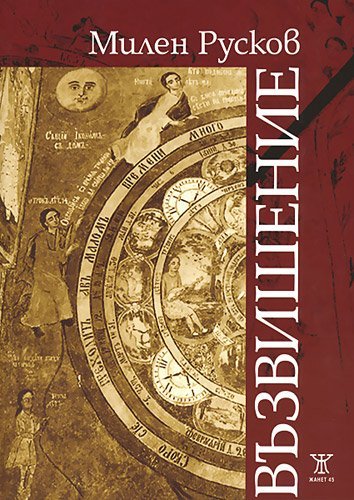
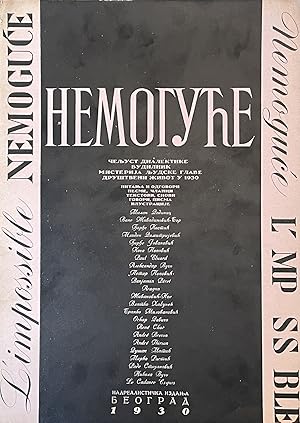
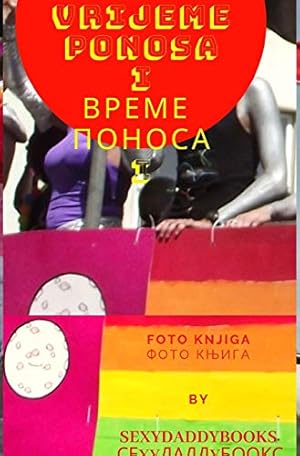

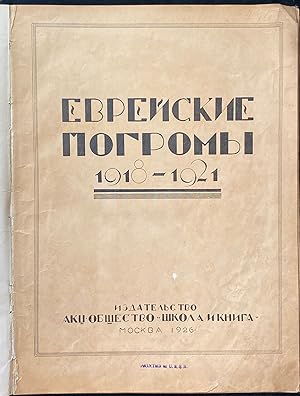
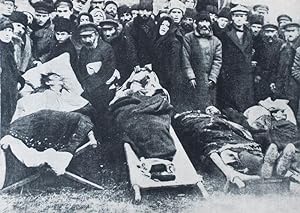
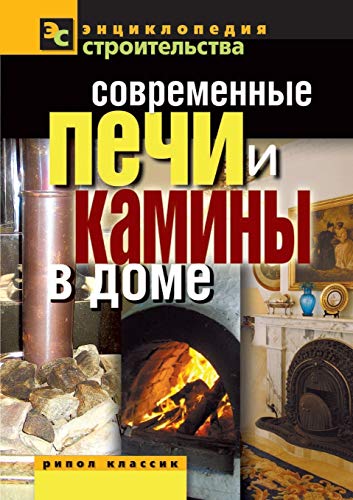
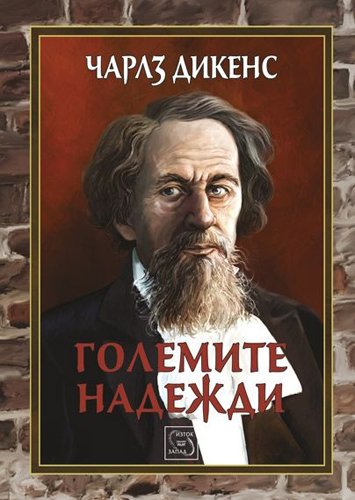
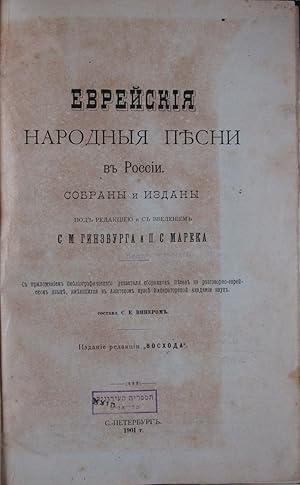
![Bild des Verkõufers f³r [Kreitserova sonata. The Kreutzer Sonata.] ą č ąĄą č ąĄč ąŠą ą░ č ąŠąĮą░č ą░. Tč ąĄč č ąĄ č č č č ą║ąŠąĄ ą ą ą ą░ąĮą ąĄ zum Verkauf von F÷ldvßri Books](https://pictures.abebooks.com/inventory/md/md15410508329.jpg)
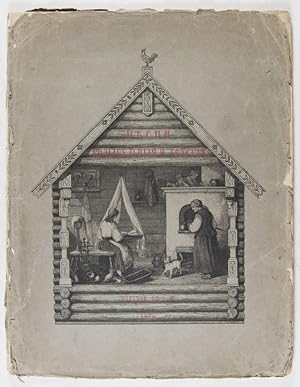

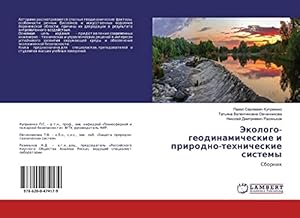
![Bild des Verkõufers f³r ą ąĄą║č ą ą ąŠ č ą░ą▒ąŠč ąĄ ą ą╗ą░ą ąĮč č ą┐ą č ąĄą ą░č ą č ąĄą╗č ąĮč č ą ąĄą╗ąĄą . (Lektsii o rabotie glavnykh pishchevaritel'nykh zhelez.) [The Work of the Digestive Glands.] zum Verkauf von F÷ldvßri Books](https://pictures.abebooks.com/inventory/md/md14630165270.jpg)
![Bild des Verkõufers f³r [ąĪą╗ąŠą ąŠ ąŠ ą┐ąŠą╗ą║č ą ą ąŠč ąĄą ąĄ.] Sz¾zat Igor hadjßratßrul a pal¾cok ellen. (H÷sk÷ltemķny az oroszok ÷skorßbul. / H┼ sk÷ltemķny az oroszok ┼ skorßbul.) MagyarĒtotta Riedl Szende. [The Tale of Igor's Campaign. Epic Poem From the Ancient Time of the Russians.] zum Verkauf von F÷ldvßri Books](https://pictures.abebooks.com/inventory/md/md16783924642.jpg)
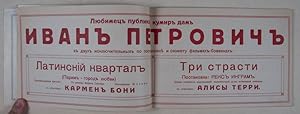

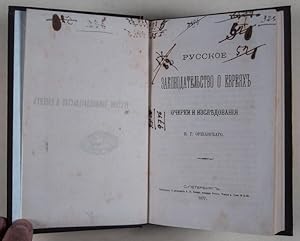
![Bild des Verkõufers f³r [Three Books Inscribed to Honecker.] France. Rķpubligue Dķmocratique Allemande. 30 Ans de Relations.; ą ąŠą ąĄč č č ąŠ ą╝ąŠąĄą╝ ą č č ą ąĄ. [Povest' o moem druge. The Story of My friend.]; ą"ąĄą╗ąŠ ą ą ą ąĮą : ą ą░ą┐ą č ą║ą ąĮąĄč č č ąĮą ą║ą░ [Delo zhizni: Zapiski neftyanika. Business of a Life. Notes of an Oilman.] zum Verkauf von F÷ldvßri Books](https://pictures.abebooks.com/inventory/md/md30784533738.jpg)
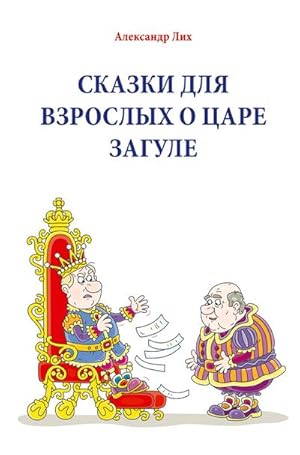
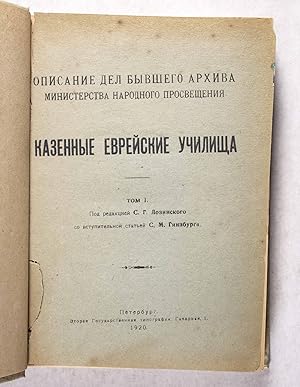
![Bild des Verkõufers f³r [Diskussionny Listok. No. 1-3.] ą"ą č ą║č č č ą ąŠąĮąĮč ą ą╗ą č č ąŠą║. ą č ą ą╗ąŠą ąĄąĮąĄ ą║č č ąĄąĮč č ą░ą╗č ąĮąŠą╝č ą č ą ą░ąĮč "ąĪąŠč č ą░ą╗č ą ąĄą╝ąŠą║č ą░č ". No. 1[-3.] 6/19 ą╝ą░č č ą░ 1910[-29/12 ą╝ą░č 1911]. [Complete Set of Three Issues.] zum Verkauf von F÷ldvßri Books](https://pictures.abebooks.com/inventory/md/md30039228410.jpg)
